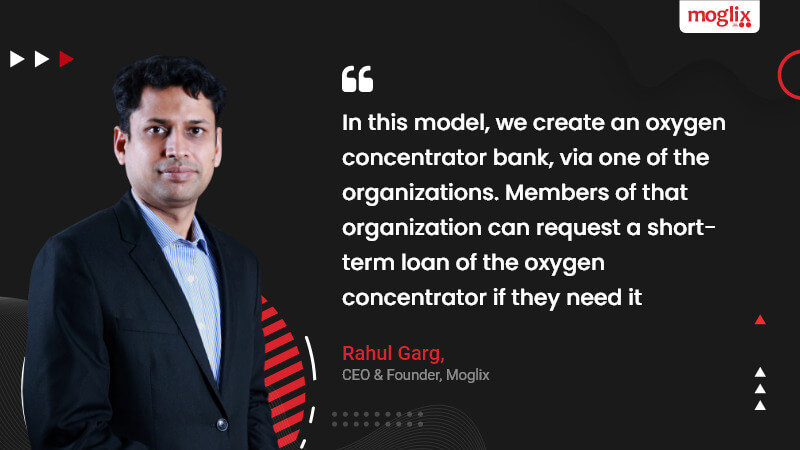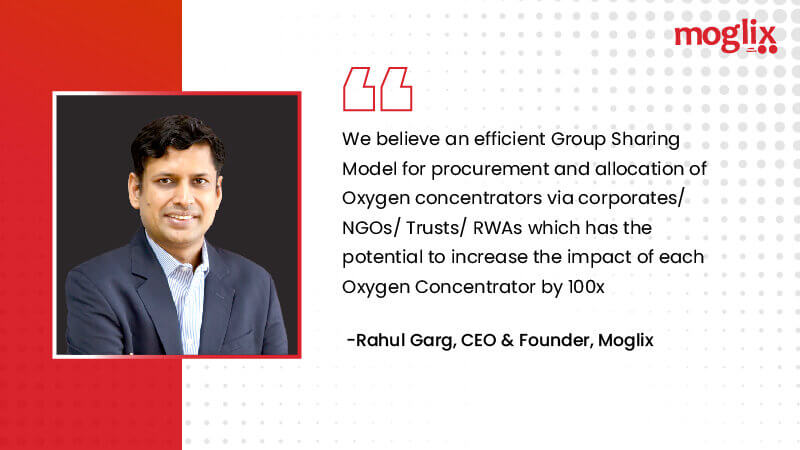Supplier Management
Supplier Management
Supplier Management
In today’s fast-paced world, supply chains are continually evolving into multifaceted dynamic models. To accommodate the heavily changing demands of customers, companies need a robust Supplier Management plan.
What is Supplier Management?
Supplier Management is seen as a supporting pillar of the supply chain function that deals with the end-to-end activities of suppliers. Competent suppliers are crucial for the growth of a business, whether a manufacturing unit or a food retail chain.
At some point, every business or organization purchases goods and services from vendors (suppliers) to reduce manufacturing setup costs. Thus, Supplier Management refers to strategically dealing with third-party suppliers who provide essential products and services for your business.
For example: Consider that you are running a car business, in which the exhaust pipe of a specific car model is imported from a third-party vendor in a different county. You have noticed that the quality of those exhaust pipes is steadily getting worse. In such a case, you can establish a Supplier Management office in that country to regularly interact with those vendors and visit their sites from time to time to ensure the reliability of the parts supplied to you.
Why is Supplier Management important?
As most organizations are expanding their businesses globally, the demand for an effective supply chain is increasing rapidly. Supplier Management also safeguards a company’s sales in the international and domestic markets. It makes the activity of purchasing from third-party suppliers more profitable.
A well-structured Supplier Management model is required to develop good relations with suppliers, while handling customer requirements properly, and communicating these requirements to the company’s vendors..
With an efficient Supplier Management, businesses can import low-cost, high-quality goods and services from other countries without changing the current organization structure. You do not need to build a pen factory when you can order them from a third-party supplier at a discount.
Now that we have established the importance of Supplier Management, let’s look at some benefits of Supplier Management.
- Cost Saving:
With a dedicated Supplier Management team, businesses can understand the supply chain process better and focus on improvements. Supplier Management teams can use SRM (Supplier Relationship Management) tools to continually evaluate the performance of each supplier.
They can ask for quotations of required goods and services from multiple suppliers. This will fuel competition among suppliers and help organizations secure the best deals.
- Reduces Price Volatility:
Suppliers usually develop a professional rapport with their clients and establish trust so that their clients continue to purchase from them everytime there is a requirement. . Therefore, for the sake of long-term business associations, suppliers do not increase the prices of their products frequently.
Companies can take advantage of fixed prices and make long-term contracts with suppliers. A business can thus adjust the prices as per market demand without any price fluctuations from the supplier’s end.
- Quality Improvement:
Supplier Management plays a key role in maintaining quality. With onsite Supplier Management teams, organizations can understand how different markets across the globe function. . Based on this knowledge, businesses can build strategic relations with local suppliers.
To acquire more business, suppliers provide the best products and services to their existing customers, and this ultimately improves the quality of the finished goods and services. Buyers and suppliers can also exchange ideas for continuous improvement.
Buyers can implement ERP tools to track their supplies. They can generate MIS for sales, customer feedback, price fluctuations, and monitor profit figures to get the most out of Supplier Management tools.
In conclusion, Supplier Management is essential for businesses that aim to expand rapidly while effectively handling their suppliers. Supplier Management is a practical approach to maintain profits and increase the efficiency of a business. With the help of Supplier Management tools, companies can coordinate well with their suppliers and ensure significant savings. The traditional ways of managing suppliers are now obsolete. Companies need to adopt well-organized systems like Supplier Management to make informed decisions when buying from third-party suppliers.
Industries & Impact
 My vision for Moglix is to change the face of industrial commerce: Rahul Garg
My vision for Moglix is to change the face of industrial commerce: Rahul Garg
 Now and Next in the Infrastructure Sector
Now and Next in the Infrastructure Sector
 Moglix enabled Agile MRO Procurement at Scale through Workflow Digitization of large EPC company
Moglix enabled Agile MRO Procurement at Scale through Workflow Digitization of large EPC company
Purchase Order
Purchase Order
Purchase Order
What is a Purchase Order?
For the success of any company, tracking of inventory, ordering supplies and sellable goods is essential. For a well-organised purchasing process, it is important to look at the purchase order. But many companies fail to understand the importance of purchase order and their benefits. For packaging in purchases, it is better to use sustainable packaging as it is an eco-friendly process. We at Moglix believe in eco-friendly and earth-friendly packaging methods for our products.
Benefits of Purchase Order
Some of the benefits of using purchase orders are:
- Better accuracy in both financial and inventory management.
- Standardised budgeting as the funds must be made available before issuing a purchase order.
- Quick delivery because the purchase order schedules delivery as per the requirement of the buyer.
Elements of a Purchase Order
The purchase order contains the following information and companies’ name and the date of the purchase order. The elements are.
- Product’s name or specifications
- Exact Quantity of the product
- The Price of the product
- Any other additional terms like discounts etc.
Reasons Companies Use Purchase Order
Some of the common reasons concerning the use of purchase order by companies have been enumerated below:
1. Purchase Order Provides You Legal Protection
A purchase order is a legally binding agreement that binds both the parties, i.e. the buyer and the vendor. If anything goes wrong in the purchase, the purchase orders will help in proving it. To convert a purchase order into a legally binding document, it must be acknowledged by the vendor.
2.Tracking of Orders Becomes Easier
The PO helps you in maintaining a record for all the goods and services ordered by your company. It also keeps an account of your method of payment and the scheduled arrival time. The invoice numbers assist you in managing the invoices and also track your orders. By way of this document, you are well aware of your orders’ delivery time and date.
3.It Assists you During Auditing
Suppose your company gets audited, you will benefit through your purchase orders. You can provide the auditors with the document to cross-check with your invoices as well as slips. If you don’t have a purchase order, you have to go through a hard process of showing receipts, invoices and emails with the seller.
4.Eases the Communication Process with the Seller
Steps in Purchase Order
The steps in a purchase order for a buyer are as follows:
- The management notifies about a purchase to the purchasing department. It is also done by issuing a Requisition form for purchase.
- After getting approval of the department’s order, the purchase order is properly filled explaining the purchase details.
- The purchase order is sent to the vendor/seller to decide whether they will fulfil the order. If approved, it becomes a legally binding document.
- The purchaser then sends payment at the decided price and if not at an agreed date later on.
- Lastly, the seller delivers the order along with the invoice. The purchaser’s finance department then checks the invoice to ensure if both the documents have the same amount.
Purchase Order Format
To create a purchase order, you need to include the following information:
1.Header
Mention your company’s details, including your company name, date of the purchase order, address of the business and the order number.
2.Information Related to Vendor
Specify the original recipient of the purchase order. Here you need to mention the name of the vendor company, your contact name, and the vendor company’s business address.
3.Shipping Address
Mention the place where the order needs to be sent and the method of shipping like via air, road, shipping terms, and the expected delivery date.
4.Order Details
All the products mention the product’s code, a proper product description with name, specified price, and description.
5.Complete Summary
At the end of purchase order provide a subtotal of the amount by specifying the discounts, taxes, the total amount with the shipping costs.
Conclusion
Purchase order ensures easy tracking of goods. It also prevents fraud. What matters after approval of the purchase order is the safe delivery of the product. The product to be delivered properly needs good packaging. Hence, the best packaging method is sustainable packaging as it does not harm the environment and keeps the product safe.Industries & Impact
 My vision for Moglix is to change the face of industrial commerce: Rahul Garg
My vision for Moglix is to change the face of industrial commerce: Rahul Garg
 Now and Next in the Infrastructure Sector
Now and Next in the Infrastructure Sector
 Moglix enabled Agile MRO Procurement at Scale through Workflow Digitization of large EPC company
Moglix enabled Agile MRO Procurement at Scale through Workflow Digitization of large EPC company
The Benefit of E-Catalog for Indirect Materials Procurement

The Benefit of E-Catalog for Indirect Materials Procurement
E-Catalog | Indirect Materials Procurement |P2P AutomationRead More
Startups fight COVID-19: Moglix fights against India’s oxygen crisis

Startups fight COVID-19: Moglix fights against India’s oxygen crisis
As India battles the deadly second wave of the COVID-19 pandemic, startups, corporates, and individuals are all rallying together to ensure that they are doing their bit. The biggest challenge in the second wave is the dearth of oxygen cylinders along with crucial medicines.
“We estimate the need for at least 100,000 oxygen concentrators across India. However, each person buying an oxygen concentrator for themselves is not scalable and will lead to inefficient distribution of precious resources. Most people will find the cost prohibitive and the requirement short-lived (one to two weeks),”
Rahul says.
B2B ecommerce startup Moglix has been supplying PPE, oxygen concentrators, oximeters, thermometers etc. to essential goods and services companies to ensure their employees are protected. It has also distributed 15 million+ PPE kits and safety items amid this pandemic.
The startup has developed a “group sharing model” for increasing the impact of every oxygen concentrator by 100x, and is enabling organisations, NGOs, trusts, and RWAs to create oxygen concentrator banks for patients and providing a safety net for their communities.
“If your organisation would like to join us in this mission to provide a safety network to corona warriors, please write to us at info@moglix.com. We can help you set up similar network-based models for your organisation and share our learning/ SOPs. Let us come together to do our bit in this fight,”
Rahul Adds.
Rise of Artificial Intelligence in Human Resource Management

Rise of Artificial Intelligence in Human Resource Management
Human resource management’s future lies in making the business function…Read More
Supply Chain Finance Automation Fast-Tracks MSME Payments

Supply Chain Finance Automation Fast-Tracks MSME Payments
Did you know only six crore MSMEs in India account for 29 peancing? What does…Read More
Creating a 100x Impact of Oxygen Concentrators

Creating a 100x Impact of Oxygen Concentrators
As hospitals struggle with bed and oxygen availability, Oxygen concenhome/ clinic care….Read More
Sustainable Packaging
Sustainable Packaging
Sustainable Packaging
The Need for Sustainable Packaging
One of the most concerning issues about sustainability is how the world produces and consumes. The process has a ubiquitous presence of packaging. Choose any product from your daily life – 90% of them come wrapped in packaging, which is eventually discarded and thrown off as waste. With the outbreak of the pandemic, the buying trends have shifted even more online. Home delivery is the new norm. Erstwhile unpacked items like vegetables, fruits and eggs which could be bought from the local stores, are now being delivered in packages. Sustainable packaging has become a necessary condition for both businesses and consumers. It’s no longer a choice.
What is Sustainable Packaging?
In simple words, sustainable packaging is an archetype of packaging, the environmental footprint of which, goes down over time, preferably such that, in the long run, either the packaging decomposes without causing any loss to the environment or perennially retains its usability and thus, is not required to be dumped in the environment.
In a broader sense, sustainable packaging involves such packaging, the raw materials of which are sourced responsibly, designed effectively such that the packaging remains safe all over its life cycle, meets the needs and preferences of the market in terms of cost and quality, is manufactured using reusable and clean energy, and after its shelf life is over, can be efficiently recycled or broken down organically.
What are the criteria for sustainable packaging?
The basic criteria of sustainable packaging as laid down by the Sustainable Packaging Coalition, blends sustainability, ecological preservation and business objectives. They are as follows –
- The packaging should be beneficial, safe and healthy for individuals and communities throughout its life cycle.
- It should meet market criteria for performance and cost.
- It is sourced, manufactured, transported, and recycled using renewable energy.
- It optimises the use of renewable or recycled source materials.
- The packaging should be manufactured using clean production technologies and best practices.
- It should be made from materials healthy throughout the life cycle.
- The packaging should be physically designed to optimise materials and energy.
- It can be effectively recovered and utilised in biological and/or industrial closed-loop cycles.
What are the different ways of doing sustainable packaging?
Below is a prescriptive list, charting different ways, packaging could be made sustainable –
Packaging considering ingredients- One of the most common methods of sustainable packaging is to use 100% raw and natural, or 100% recycled and recyclable materials.
Packaging considering production process – Packaging can be made sustainable by reducing the production process, optimising the supply chain and minimising the carbon footprint, through transformation and innovation.
Based on the above two methods, sustainable packaging can be of following types:
Recyclable packaging – Using materials like cardboard and paper is environment friendly for they can be recycled to produce other items. They have surfaced as the major substitute for plastic packaging.
Reusable packaging – For more durable sustainable packaging, natural-poly fabric and reusable plastics can be used, which have a longer use life and also restrict brazen carbon footprint contribution of disposable plastics.
Reduced packaging – Reduce packaging implies directly reducing environment and carbon footprint. This can be done by engineering goods and products in such a fashion that they can be delivered without damage, with the least possible packaging.
What are the business benefits of sustainable packaging?
Although it appears to be environment-centric, sustainable packaging constitutes social and economic implications as well. Adopting sustainable packaging comes with a series of business benefits –
- More and more consumers are seeking to buy from environment-friendly and responsible businesses; it will not only retain but also expand the customer base, and hence sales.
- Using sustainable packaging improves the brand image of the business.
- Sustainable packaging renders a good experience to the customers as well, thereby contributing to customer satisfaction.
- By using recyclable and reusable materials, and by reducing packaging, a business can reduce costs.
- Sustainable packaging can save business significant storage and warehouse costs.
Conclusion
Clean and affordable energy, sustainable cities and communities, responsible consumption and production, climate action, protection of life on water and land are some of the 17 SDGs adopted by the UNDP, along with goals like zero poverty, no hunger, reduced inequality etcetera. These goals highly depended on each other. Issues like poverty, hunger and environmental degradation are mutually dependent and correlated. In the process of growth and development, we must adhere to sustainable means of production, distribution and consumption. In a lifestyle, where the goods we consume, without any exception, come in some or other form of packaging, for us to receive them in proper and usable condition, the packaging industry has a massive incidence. So, it must be viewed from the lens of sustainable development.
Industries & Impact
 My vision for Moglix is to change the face of industrial commerce: Rahul Garg
My vision for Moglix is to change the face of industrial commerce: Rahul Garg
 Now and Next in the Infrastructure Sector
Now and Next in the Infrastructure Sector
 Moglix enabled Agile MRO Procurement at Scale through Workflow Digitization of large EPC company
Moglix enabled Agile MRO Procurement at Scale through Workflow Digitization of large EPC company
Strategic sourcing
Strategic sourcing
Strategic sourcing
What is Strategic Sourcing?
Strategic Sourcing is a method of sourcing that applies various strategies while sourcing different products and services. The investors in this increasing competition and the technological environment, are more focused on investing in supplier management and relationships.
The different types of strategic sourcing are Outsourcing, Low-cost Country sourcing, Global sourcing and crowdsourcing. Strategic sourcing boosts the quality and efficiency by building a strong and multiple supply base for an organisation. It is a joint process that permits an enterprise to align its purchasing power with the overall value proposition.
What are the Advantages of Strategic Sourcing for Buyers and Sellers?
Some of the benefits of strategic sourcing for buyers are:
1. Enhanced and Advanced Futuristic Guidelines
Businesses can collect data and make better choices by using strategic methods. This will help them achieve a successful outcome.
2. Proper Management of Supply Chain in Business
Strategic sourcing can help in improving relationships with multiple enterprises. The supply chain is adequately managed through a business that protects the relationships of the enterprise with all the related organisations.
3. A Systematic Organization
By way of strategic sourcing, businesses can focus more on long-term planning for business development. The business persons with the help of strategic sourcing will be able to focus more on the future challenges of the enterprise.
4. Removing Uncertainties from the Business
If there is a close relationship with the supplier, businesses can quickly identify and solve any potential issues.
Some of the benefits for the suppliers are:
5. Control the Costs with Proper Management:
Through strategic sourcing, the suppliers can sell a significant portion of their production. This will help them in better planning and also manage the long term visibility of cash flow.
6.Increased Stability
The strategic sourcing will lead to a collaboration of the suppliers. Choosing a single supplier instead of multiple suppliers will bring more stability in the daily operations of the enterprise.
What are the Best Practices for Strategic Sourcing?
The best practices that can be adopted for strategic sourcing are:
1. Using Electronic Tender and Auction Methods:
Through eTendering, the buyers can easily calculate and evaluate the distribution, creation and storage of tenders. Electronic tendering is very efficient in comparison to manually managing the tender.
2. Using software for Contract Management
The software for managing contracts helps in managing numerous contracts. If businesses fail to manage the supplier agreements using appropriate tools, it can reduce the prices and the service terms of the contract.
3. Track the Expenses and Savings
If an enterprise has a savings tracker solution, it will help to record your savings. You can easily forecast your value by evaluating the documents and reports in the tracker.
What is the Process for Strategic Sourcing?
The process of strategic sourcing has been divided into seven steps. The seven steps for strategic sourcing are as follows:
- Study the categories of products that are used by businesses. Also, have a look at the spending pattern of the businesses. Make a record of the process and even the involved departments.
- Create a strategy for sourcing based on the goals of the business.
- Prepare a portfolio of suppliers and their market.
- Define the proposal request and create templates for the same.
- Discuss with the selected suppliers.
- Integrate the suppliers into the existing process or add new vendors or outsource the providers.
- Keep a track on the performance metrics and then improvise the sourcing plan as per the need and analysis.
What is the Ultimate Outlook of the Process of Strategic Sourcing?
The ultimate outlook for the process of strategic sourcing are:
- Define all the Category and Arrange the Sections
- Analysis of the Supply Market
- Create a Proper Strategy
- Develop a Strategy for Sourcing
- Select Suppliers Through Negotiation
- Implementation and Integration of Policies
- Track the Results and Note Them
Conclusion
Many organisations are adopting strategic sourcing methods to establish a comprehensive approach to manage the requirements of sourcing. It helps in building a proactive approach to many supply chain disturbances. The business goals and its requirements are correctly aligned to the appropriate and right suppliers having significant capabilities. The enterprises improve their performance and also gain on a competitive front over their peers. Further, by obtaining automation technology for strategic sourcing, the business units get more empowered to manage their sourcing. It is integrating the blockchain in the supply chain to increase visibility and accuracy in many cases. Contact us for more details.
Industries & Impact
 My vision for Moglix is to change the face of industrial commerce: Rahul Garg
My vision for Moglix is to change the face of industrial commerce: Rahul Garg
 Now and Next in the Infrastructure Sector
Now and Next in the Infrastructure Sector
 Moglix enabled Agile MRO Procurement at Scale through Workflow Digitization of large EPC company
Moglix enabled Agile MRO Procurement at Scale through Workflow Digitization of large EPC company
Procurement Transformation
Procurement Transformation
Procurement Transformation
Here is everything you need to know about Procurement Transformation
The world is going through a turbulent phase. Given the unwanted situation, the importance of efficient procurement for businesses has increased manifold. Because of this, procurement transformation, a relatively new-age concept, is gaining traction amongst small and big companies alike.
Procurement transformation is a hot topic for all organizations, and they are looking to rework their operations to optimize the value derived. It is not something that requires expertIse, but it is more of a mindset and requires dedication. The process is unique for every company and requires a different approach every time, but the underlying principles and best practices remain the same.
Similar to how the implementation varies from one organization to another, the scope differs too. Once you consider your benefits from a particular strategy and your objectives, you can then set out to decide the range of your endeavors.
It will help you and your team to demarcate the items to be covered and the requisite time frame to achieve the same. It would also help you assess the cost angle and forward the same to the higher management for approval.
The scope covers these –
- What forms the part of procurement transformation?
- What to exclude from your procurement transformation processes?
Definition of Procurement Transformation
Given the impetus on efficient procurement in the current scenario, it is imperative for companies to look for optimizing their tactics.
- Procurement transformation refers to a type of change management focusing on establishing long-term improvements for the organization’s procurement and supply management processes, activities, and relationships.
- Procurement transformation relies on applying various tools and techniques to impact areas such as extending, sustaining, and renewing cost control, launching and speeding up cost control, and several others.
The Three-Phase Procurement Transformation Process
Procurement transformation is not a one-off project that your workforce pulls off. It is instead a mindset to improve consistently and better your previous stats. Here is a three-phase procurement transformation most companies can follow –
1. Tactical
Top management of most organizations is of a view that procurement is a tactical process. So, they request their procurement team to juggle between manual processes continually. While it is right to an extent, the new-age procurement transformation imbibes a whole different approach.
- To initiate the transformation phase, the procurement department should first establish and understand its relationship with other business units. The next step is to bring them all together and speak a common language.
- You may need a consultant to make procurement the center of profits and attraction. It can then shift to a more strategic role where your workforce makes purchases based on a sound strategy. The switch will bear fruits over time and result in cost reduction, flexibility, and higher operational efficiency.
2. Operational
Once you have set up the tactical viewpoint, procurement transformation will have some leeway to explore and make changes. Even though your workforce understands its worth, trying to develop it from a tactical to an operational move will require time and patience.
- The management can benefit from the reputation it has created and opt for massive up-scaling. The top people can hire the right resources and give them the requisite power to ensure it spreads its wings and blossoms.
- A capable CPO will help it build and expand both internally and externally. Because of their name attached to the process, targeted transformations soon become a reality.
3. Strategic
Very few organizations can imbibe procurement transformation as the core of their business. These are those embracing strategic sourcing successfully. They understand that it is not a one-off thing and are committed to practicing it vehemently over time. Instead of seeing it as a separate process, it is more of an implicit practice that keeps them going.
- Strategic transformation can help them establish high tracking and reporting standards, helping other business units evolve.
- It also involves figuring out areas requiring immediate attention and those that can be excluded. It ensures a holistic approach and makes transformation a habit rather than a necessity.
Set on a Procurement Transformation Voyage With Moglix
Procurement transformation is about acting mature and looking beyond facts and figures. Instead of aiming for being the best-in-class, it envisages being better than what you were yesterday. It is more about making it a part of your culture in a way that you don’t even need to talk about it.
At Moglix, we help organizations set up procurement transformation and practice it conveniently.
Click here to contact our team of experts today!
Industries & Impact
 My vision for Moglix is to change the face of industrial commerce: Rahul Garg
My vision for Moglix is to change the face of industrial commerce: Rahul Garg
 Now and Next in the Infrastructure Sector
Now and Next in the Infrastructure Sector
 Moglix enabled Agile MRO Procurement at Scale through Workflow Digitization of large EPC company
Moglix enabled Agile MRO Procurement at Scale through Workflow Digitization of large EPC company
